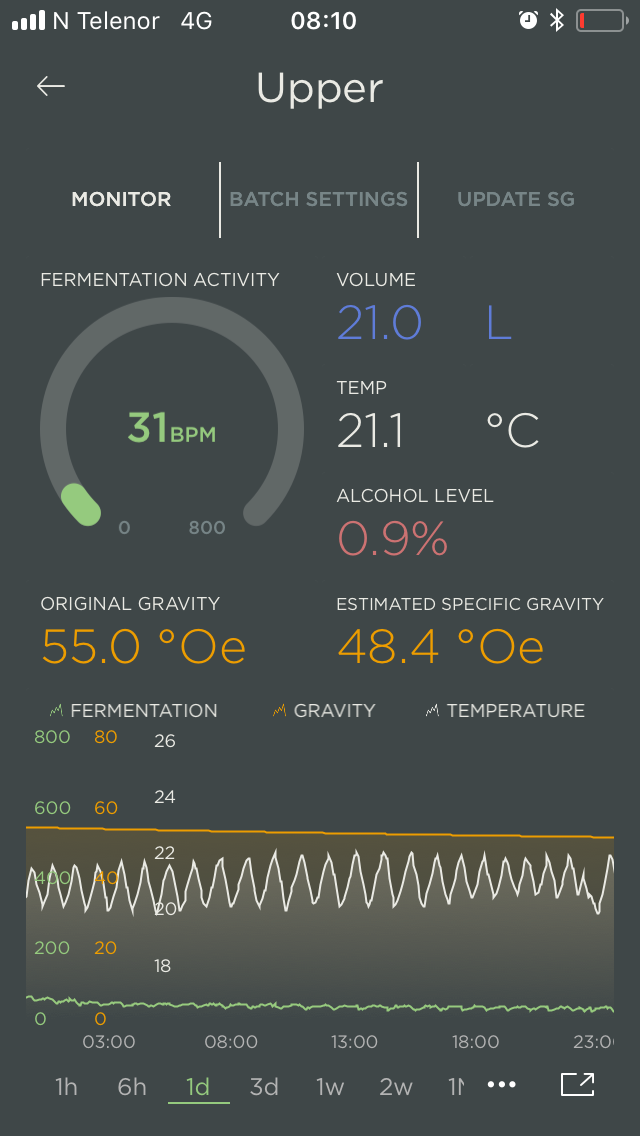Fermentation stops a few hours after pitching, and seems dormant for half a day, before resuming activity. This only happens in one out of two fermentation buckets, both pitched the same WLP400 (Wit yeast) from the same starter, and residing in the same temperature-controlled fermentation kloset. The monitoring equipment (a couple of PLAATOs) has been tested, and presumably works as expected (i.e. is registering activity when emulated). What is going on here?
Edit: Filling the wort and pouring the yeast was alternated between the buckets, to ensure roughly similar conditions.
Figure 1: Bucket where fermentation seems dormant. Fermentation activity shown by the green line, temperature control shown by the white.
Figure 2: Bucket with expected fermentation activity. Fermentation activity shown by the green line, temperature control shown by the white.

